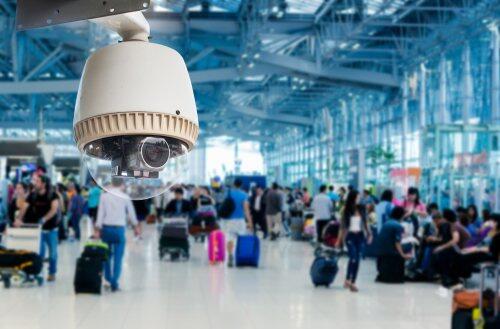Threats arise quickly and evolve fast. Proactive security solutions that can prevent, detect and respond rapidly are crucial to the aviation industry.
Security and emergency management are high on the radar for the aviation industry. Today, the International Air Transport Association (IATA) indicate that more than 100,000 commercial flights take off and land, transporting on average 1 million people over 54,000 routes every day, and those figures are expected to double over the next 20 years. Managing and dealing with security will only be heightened as the industry continues its rapid expansion.

Airports are vast with large areas that must be secured at all times. Multiple buildings, an endless flow of people, 24/7 air traffic and the storage of goods, are only some of the considerations that aviation operators need to think about. Security solutions must provide:
• Secure and reliable communications to ensure uninterrupted service
• Situational awareness to get the right information, to the right place, at the right time
• Information sharing to coordinate actions between stakeholders
• Integration and interoperability with the airport’s Operational Control Center
The airline and airport industry are embracing new technologies such as IoT to help reduce costs, improve maintenance operations and enhance surveillance systems. While new technologies can improve operations, they can also create opportunities for new vulnerabilities.

Airports and airlines continue to be attractive targets for terrorists, cyber-attackers, insider threats, trafficking, and illegal immigration, in addition to other threats such as mass casualty incidents. According to the European Aviation Safety Agency (EASA), the industry currently receives more than 1,000 cyber-attacks per month. Cyber-attacks can include taking a network off line, interference with ground communications, business interruptions, and damage to a company’s brand, among other impacts. A cyber security strategy that provides a layered approach can protect different aspects of the network. And an up-to-date communications network with appropriate security measures will reduce the risk of successful cyber-attacks. With a Communications Platform as a Service (CPaaS) that leverages BOTs, Artificial Intelligence (AI) and Information Systems Databases, airport authorities can create new services to improve detection and reaction, notify stakeholders of issues, and inform passengers about potential threats.
Learn more about how airport systems can provide the building blocks that help reduce the risk of threats in the aviation industry. Check out our smart airport solutions and learn more about how airport systems can provide the building blocks that help reduce the risk of threats in the aviation industry.
Latest Blogs

The SaaS Advantage for Hotels and Hospitality Communication…
Modern hospitality communications platforms deliver flexibility, cost optimization and exceptional guest experiences.

Your Communications System: A Brake or an Accelerator?
A modernized platform empowers enterprises to optimize operations and drive continuous performance.

Smart Manufacturing Solutions: The Future of Connected Fact…
Smart manufacturing solutions enable connected factories through reliable, intelligent network connectivity that powers automation and efficiency.

Improving Collaboration in Multimodal Transport
Rainbow transforms how companies, staff and passengers operate and connect in public multimodal transport systems.





